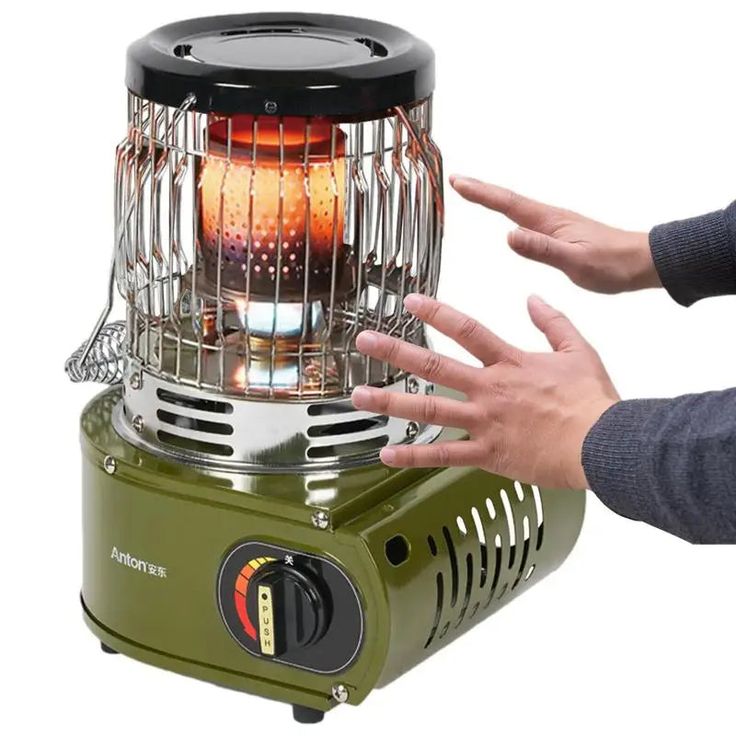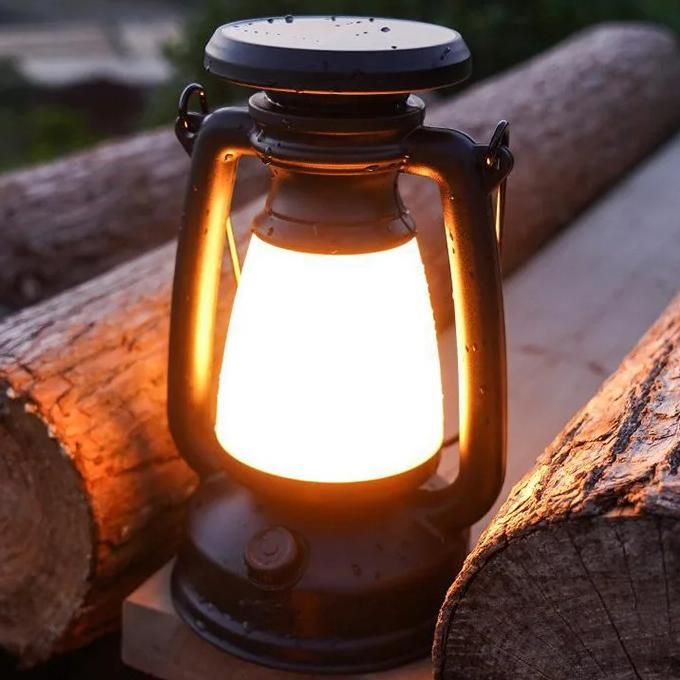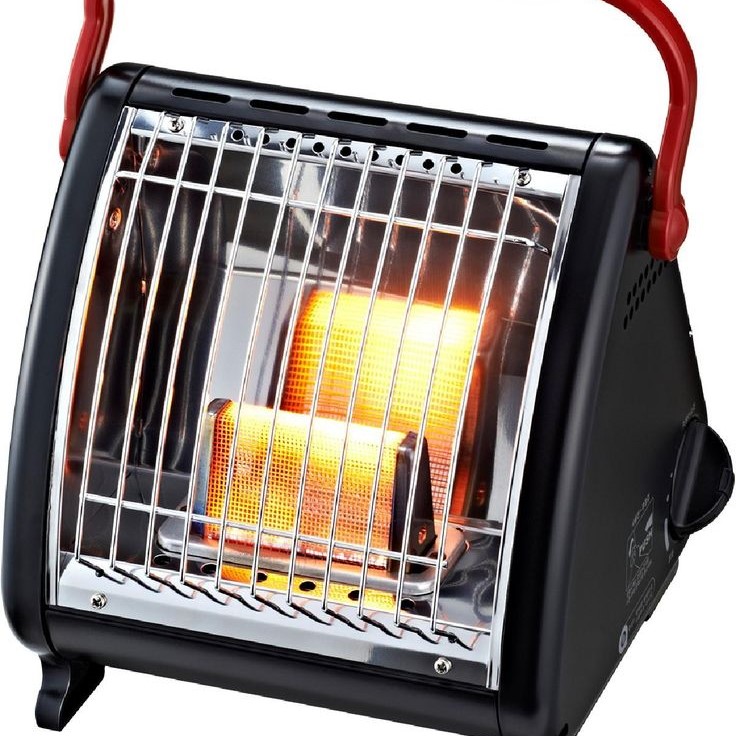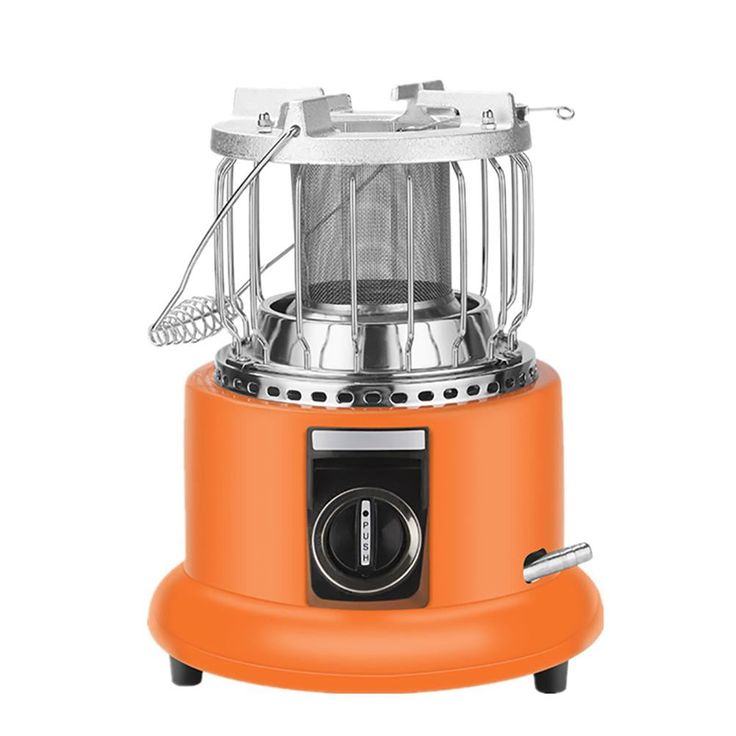Introduction
Camping is an exhilarating experience, but it can become uncomfortable if you don’t know how to heat a tent properly. Cold temperatures can quickly drain your energy and spoil the fun. Whether you’re winter camping or simply dealing with chilly nights, understanding effective ways to keep your tent warm is crucial. This guide explores various techniques, from portable heaters to insulation methods, ensuring you stay cozy no matter the weather.
Staying warm isn’t just about comfort; it’s also about safety. Hypothermia is a real risk when exposed to prolonged cold. By learning how to regulate the temperature inside your tent, you protect yourself and enhance your overall camping experience. Additionally, many modern solutions are eco-friendly, making them ideal for environmentally conscious adventurers. Let’s dive into practical strategies that will transform your next outdoor adventure.

Choosing the Right Tent
Choosing the right tent is key for comfort and warmth during outdoor adventures. The tent you select can make a huge difference in how well heat is retained on chilly nights. There’s a lot to think about from materials to design.
Factors to Consider for Heat Retention
Tent Size
- Impact of Size on Heat: The overall size of the tent plays a crucial role in heat retention. Smaller tents require less effort to heat and maintain a warm environment because there is less air volume to warm up.
- Intimate Spaces: A more compact space not only conserves heat but also creates a cozier atmosphere, allowing for improved body heat retention among occupants.
Fabric Thickness and Color
- Material Matters: When choosing a tent, opt for thicker fabrics, as they generally provide better insulation and prevent heat from escaping as quickly.
- Color Considerations: Dark-colored tents are particularly effective in absorbing sunlight, which enhances warmth inside the tent during the day. This can help create a more comfortable environment even in cooler weather.
- UV Protection: Thicker and darker fabrics often also provide better UV protection, ensuring that the internal temperature remains stable while also safeguarding against sun damage.
Mesh Panels
- Minimizing Heat Loss: Consider the number of mesh panels in the tent design. Fewer mesh panels reduce the areas where heat can escape, leading to improved heat retention.
- Ventilation vs. Insulation: While mesh panels are useful for ventilation and moisture management, they can contribute to heat loss. Finding a balance between adequate airflow and insulation is key.
Rainfly Usage
- Adding Insulation: Tents equipped with a rainfly create an additional layer between the outside environment and the inside of the tent, effectively trapping heat.
- Wind Protection: A rainfly also shields the tent from cold winds and rain, which can further help maintain a warmer interior environment.
- Proper Setup: Ensure that the rainfly is properly attached and taut to maximize its insulating properties and reduce gaps where heat might escape.
Ceiling Height
- Lower Ceiling Benefits: Opting for a tent with a lower ceiling can significantly reduce the amount of space that needs to be heated. This results in faster warming and less energy expenditure from your heat source.
- Efficiency of Heat Sources: A lower ceiling allows body heat and heat from stoves or lanterns to concentrate more effectively in the living area, promoting a warmer atmosphere.
- Cozy Environment: Lower ceilings can create a more intimate and comfortable space, contributing to a better camping experience, especially in cold weather.
Double-Wall vs. Single-Wall Tents
- Heat Trapping Efficiency: Double-wall tents provide superior insulation compared to single-wall tents. The air gap between the two layers helps minimize heat loss, making it easier to maintain warmth inside.
- Condensation Management: Double-wall designs also help reduce condensation issues, which can be especially beneficial in maintaining a comfortable living environment during colder months.
- Versatile Use: While single-wall tents may be lighter and easier to set up, investing in a double-wall tent may be more advantageous for those planning to camp in colder conditions, offering better long-term heat retention.
Insulated vs. Non-Insulated Tents
Insulated Tents
- Built-in Insulation: Insulated tents feature additional layers of materials designed to provide better thermal regulation. This insulation helps trap body heat and prevent cold air from entering, making them particularly effective in retaining warmth.
- Ideal for Cold Climates: These tents are specifically engineered for colder environments, making them a great choice for winter camping or in areas where temperatures drop significantly at night.
- Temperature Regulation: While insulated tents are excellent for keeping warmth during chilly weather, they can become excessively hot in milder or warmer conditions. This can lead to discomfort if proper ventilation is not available.
- Weight Consideration: Insulated tents can be heavier than non-insulated options due to the additional materials. This weight factor is crucial to consider for backpackers or those who need to carry their gear over long distances.
Non-Insulated Tents
- Lightweight Design: Non-insulated tents are typically lighter and easier to transport, making them an excellent choice for backpackers or campers looking to minimize their load.
- Versatility: These tents are more versatile in various weather conditions. They perform well in warm to mild climates, where heavier insulation may not be necessary.
- Added Insulation Options: While non-insulated tents may lack built-in warmth, they can be enhanced with additional insulation methods, such as using a ground footprint or an emergency blanket. These additions can help increase warmth without significantly impacting weight.
- Ventilation Considerations: Non-insulated tents often come equipped with mesh panels for ventilation, which is beneficial in warmer conditions but may allow cold air in during cooler weather. Being mindful of temperature fluctuations is important when using these tents.
Choosing the Right Tent
- Climate Considerations: Your choice between insulated and non-insulated tents largely depends on the climate in which you plan to camp. In colder areas, insulated tents are preferred, while non-insulated tents are suitable for warmer climates.
- Camping Style: Consider your camping style when selecting a tent. If you enjoy backpacking or camping in varying conditions, a non-insulated tent may offer the flexibility you need. Alternatively, if you primarily camp in cold environments, an insulated tent would be more advantageous.
- Personal Needs: Ultimately, your decision should align with your specific needs for warmth, comfort, and safety during your camping trips. Ensure that whichever tent you choose provides adequate protection against the elements while also being easy to set up and transport.
Portable Heating Options
When considering how to heat a tent, portable heating options offer versatility and convenience. These can range from propane heaters to electric and solar-powered alternatives, providing warmth tailored to your camping situation.
Safe Use of Propane Heaters
Propane heaters are popular for their efficiency and ease of use. To ensure safety:
- Choose a heater with an automatic shut-off if tipped over.
- Never leave a heater unattended.
- Ensure proper ventilation to prevent carbon monoxide build-up.
- Keep flammable materials away from the heater.
Remember, propane heaters come in various sizes—pick one that matches your tent’s volume.
Electric Heater Considerations
While less common in remote areas, electric heaters can be a great source of heat when you have access to electricity. Consider these tips:
- Use a model designed for tents or outdoor use.
- Look for heaters with safety certifications.
- Connect to a reliable power source to avoid overloading.
- Keep the heater dry and away from the tent walls.
Electric heaters should be powerful enough to warm your space but not so powerful they’re a fire hazard.
Solar Power Heaters
Solar power heaters harness the energy from the sun to provide heat without fuel or electricity. They’re eco-friendly and cost-effective in the long run. Key points:
- Set up solar panels during the day to collect energy.
- Store energy in a battery for overnight use.
- Position your heater where it can distribute warmth evenly.
Solar heaters usually require a significant initial investment but are a great option for frequent campers committed to sustainability.
Insulation Techniques
When figuring out how to heat a tent, proper insulation is crucial.
Using Thermal Blankets and Reflectors
Thermal blankets and reflectors can significantly improve a tent’s warmth. These items reflect body heat back towards you. Place them inside your tent, along the walls or under the sleeping area. Doing so will boost the heat retention of your tent.
Ground Insulation Tips
A cold ground can take heat away from your tent. Insulate the floor using foam pads, carpets, or specially designed ground insulation products. This layer acts as a barrier. It keeps the cold out and preserves the warmth inside.
The Importance of Ventilation
Proper ventilation is key to preventing condensation inside the tent. It allows moisture to escape, keeping the inside dry and warm. Ensure that the tent’s vents or partially opened windows allow airflow. However, avoid letting in cold drafts. Striking the right balance is important for both warmth and safety.
Clothing and Sleeping Gear
When exploring how to heat a tent, don’t overlook your clothing and sleeping gear. They play a vital role in keeping you warm throughout the night.
Selecting Proper Sleeping Bags
Choose a sleeping bag rated for the lowest temperatures you’ll face. Look for bags with synthetic or down insulation. Check for a snug fit—too roomy, and they won’t hold heat as well.
Layering Clothing for Optimal Warmth
Dress in layers to trap heat close to your body. Start with moisture-wicking fabrics against your skin. Add insulation layers like fleece or wool, and finish with a windproof layer. Remember, layers can be adjusted as the temperature changes. This keeps you warm without overheating.
Natural Heating Methods
When you’re in the great outdoors, natural heating methods can be your best friend. They’re free, effective, and often quite simple to implement. Let’s explore a couple of ways to keep your tent warm with what nature provides.
Positioning Your Tent for Sun Exposure
The position of your tent can dramatically affect its warmth. Pitch your tent to catch the morning sun. This will help warm it up as the day begins. Choose a spot sheltered from the wind yet open to sunlight. Avoid shade from trees or cliffs, especially during the morning. This natural heat can make a big difference in comfort.
Using Hot Water Bottles
Hot water bottles are a tried-and-true method to heat a tent. Before bedtime, fill durable bottles with hot water. Wrap them in cloth to avoid burns and place them in your sleeping bag. They’ll give off heat for hours, helping to keep you warm. Make sure the bottles are secure to prevent leaks and always test the temperature before placing them near your body.
Tent Heating Safety
Ensuring safety while heating your tent is essential. Dangerous situations can arise without proper precautions. Here we’ll discuss critical safety tips related to carbon monoxide and fire hazards.
Carbon Monoxide Awareness
Carbon monoxide (CO) is a silent and invisible threat. It can be lethal. Make sure any heater you use inside the tent has a CO detector. Educate yourself about the symptoms of CO poisoning. These can include headache, dizziness, and nausea. Always provide ventilation when using fuel-based heaters. Crack open a flap or window to keep fresh air circulating.
If you feel any CO poisoning symptoms, seek fresh air immediately. Inform others in your group about the dangers and how to recognize the signs.
Fire Safety Precautions
Use Fire-Resistant Materials
- Choosing the Right Materials: Ensure that any materials near your heating source, such as blankets, sleeping bags, or camping gear, are fire-resistant. This reduces the risk of ignition should any sparks or excessive heat reach these items.
- Heat-Resistant Barriers: Consider placing heat-resistant barriers or mats under heaters to catch any potential sparks or embers, creating an added layer of protection against fire hazards.
Keep Heating Sources at a Safe Distance
- Proper Placement: Always position heaters at a safe distance from the tent fabric and any other flammable items, ideally at least several feet away. This minimizes the risk of accidental contact that could lead to fires.
- Secure Setup: Ensure that heating equipment is on stable and level ground to prevent tipping or spilling, which could cause burns or fires, especially if the equipment is fueled by flammable materials.
Have Fire Extinguisher or Water Source Nearby
- Immediate Access: Always keep a fire extinguisher within reach when using heaters in the tent. Familiarize yourself with how to use it effectively in case of an emergency.
- Alternative Water Source: In addition to a fire extinguisher, having a bucket of water or a large container filled with water nearby can provide an immediate means to douse small fires before they escalate.
- Emergency Plan: Create an emergency plan with all campers to ensure that everyone knows where the fire extinguisher and water source are located and understands how to use them in case of a fire.
Avoid Leaving Heaters Unattended
- Vigilant Monitoring: Never leave your heater on while you sleep or when you are away from the tent. Unattended heaters can malfunction or become a fire hazard if they come into contact with flammable materials.
- Set a Timer: If your heater has a timer function, use it to limit the time it operates while you are asleep, ensuring that it doesn’t run longer than necessary.
Turn Off Heaters Before Sleeping
- Safety Habit: Establish a routine where you turn off all heating devices at a set time before going to bed. This reduces risks significantly and allows for a safer sleeping environment.
- Cooling Down Period: Allow your heater to cool down properly before packing it away or moving it. This cooling period helps prevent burns or accidental ignition of nearby materials should the heater still be hot.
It’s better to layer up and rely on good insulation than risk a fire by leaving the heater on overnight. By following these safety tips, you can enjoy a warm tent without sacrificing security.
Alternative Tent Heating Gadgets
When exploring how to heat a tent, alternative gadgets can offer warmth without traditional heat sources.
Chemical Heat Packs
Chemical heat packs provide a quick, portable source of warmth. They’re ideal for backpackers or campers needing to save space. Here’s how to use them:
- Activate the pack by shaking or squeezing, depending on the type.
- Place the pack in pockets or sleeping bags for direct warmth.
- Dispose of packs responsibly after use as they are single-use items.
Remember, while heat packs are convenient, they won’t warm the entire tent.
Battery-Powered Heating Elements
Battery-powered heating elements offer another alternative. They are safer than open flame and do not produce carbon monoxide. Look for these features:
- Long battery life for extended warmth.
- Multiple heat settings to control temperature.
- Automatic shut-off features for safety.
These elements usually require charging or spare batteries, so plan accordingly.
In conclusion, knowing how to heat a tent empowers you to enjoy outdoor adventures regardless of the weather. From portable heaters and insulation techniques to strategic layering and cooking habits, each method contributes to a warmer, more comfortable experience. Remember, safety should always guide your choices—whether it’s selecting the right heater or managing moisture inside your tent.
By implementing the tips outlined in this guide, you equip yourself with the knowledge and tools needed to thrive in cold environments. So pack your gear, embrace the challenge, and let nothing stand between you and your next great adventure. Stay warm, stay safe, and keep exploring!



